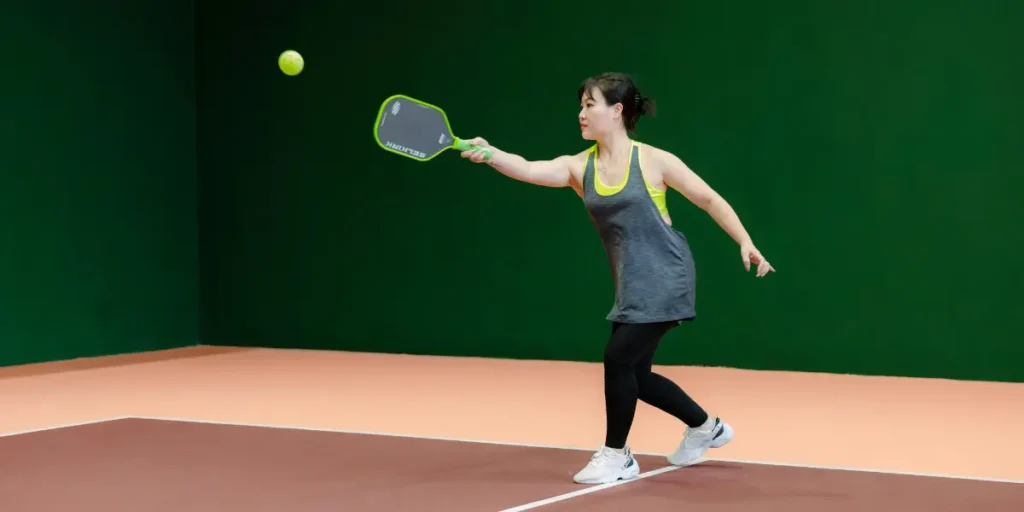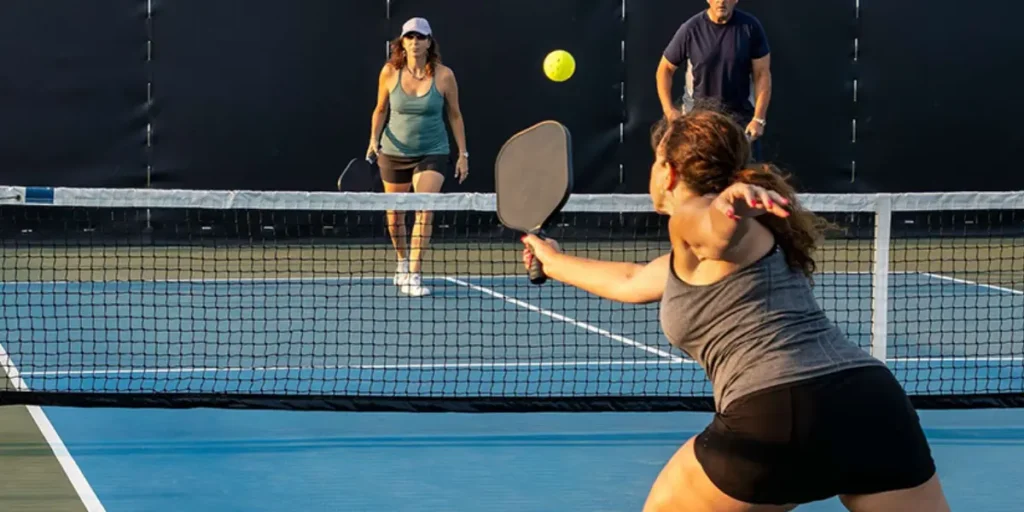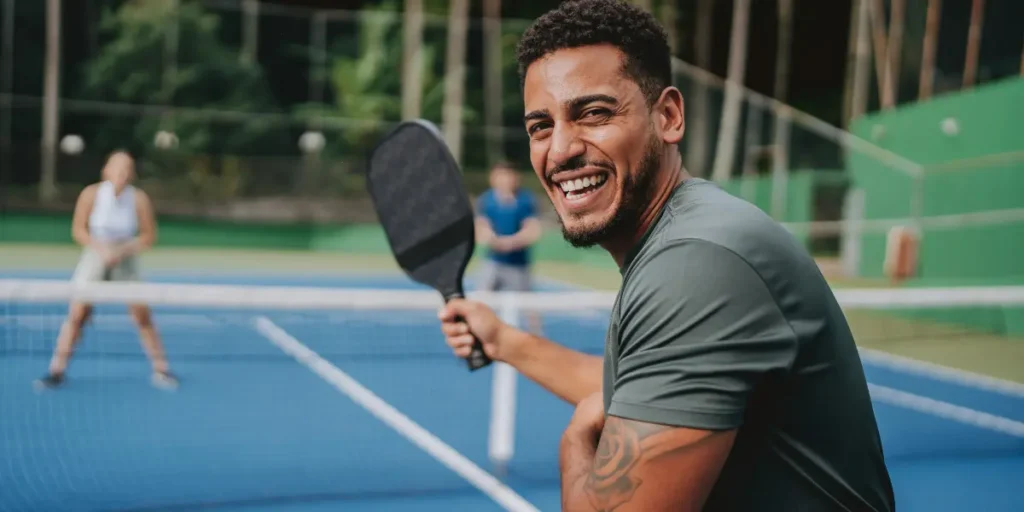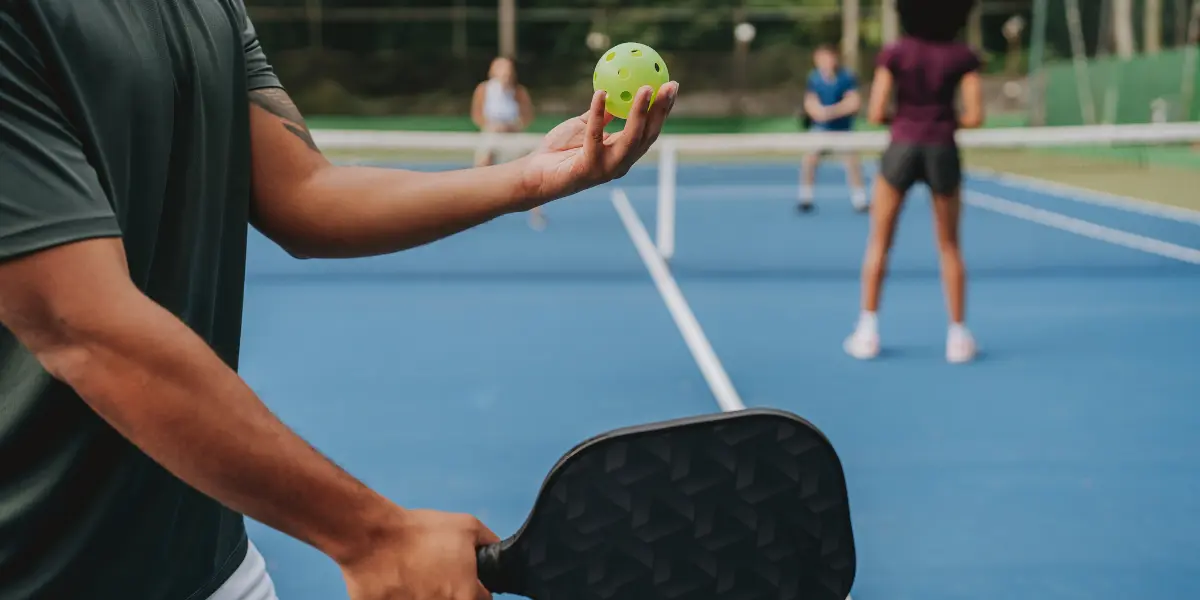When I first heard about rally scoring in pickleball, I was curious and honestly, a little confused. It sounded faster, maybe even a bit more intense. As pickleball continues to grow in popularity, more players and leagues are shifting toward this scoring method. But what exactly is rally scoring, and why is it becoming such a big deal?
In this guide, I’ll break it down in simple terms, so whether you’re a beginner or a seasoned player, you’ll understand how it works, how it differs from traditional scoring, and whether it’s the right choice for your game.
What is Rally Scoring in Pickleball?
Rally scoring in pickleball is a modern twist on the traditional system where a point is awarded after every rally, regardless of which team served. That’s the core idea.
This method speeds up matches and adds intensity. Since both teams can score on every rally, players must stay focused from start to finish. The system rewards consistency, smart shot selection, and strong teamwork.
For example
Let’s say Team A is serving, and the score is 4–3. During the rally, Team B hits a clean winner or forces Team A to make an error. In either case, Team B wins the rally.
In rally scoring, that means Team B earns a point, tying the score at 4–4. They also gain the serve for the next point. So, each rally directly affects both the score and who serves next. This constant shift in control adds pressure and excitement throughout the game.
Rally Scoring Rules in Pickleball
Rally scoring follows a straightforward set of rules that make the game faster and easier to follow. Instead of only the serving team earning points, every rally counts toward the score, which keeps both teams fully involved throughout the match.

- Every rally counts
A point is awarded after each rally, whether it was won by the serving or receiving team. This keeps both sides active and fully involved throughout the match. - Serve changes quickly
If a team loses a rally, the serve immediately switches to the other team. Only one player serves per side, which speeds up transitions. - Games are played to 15 or 21, and a team must win by 2 points. So if the score is 14–14, play continues until one team leads by two.
- Teams switch sides halfway through the game to balance court conditions. In a game to 15, this usually happens when one team reaches 8 points.
This system may seem different at first, but it quickly becomes natural. There are fewer pauses, less confusion, and more continuous action from start to finish.
The Freeze Rule in Rally Scoring
As rally scoring becomes more common in competitive and professional pickleball, some events and leagues have introduced a concept called the “freeze rule” to make end-of-game situations more strategic and fair.
The freeze rule usually activates when a team reaches game point, for example, 20 in a game to 21. At this point, rally scoring is paused, and the game temporarily switches to traditional scoring. This means the team can only score the winning point if they are serving. If they lose the rally while serving, they lose the serve, and the other team gets a chance to respond.
In some formats, the freeze can apply to both teams once they each reach 20. That means neither team can win the game unless they are serving, even if the score becomes 20–20 or 21–20. It creates a tense, back-and-forth battle where every serve and rally becomes critical.
What is the Traditional Scoring System in Pickleball?
In traditional scoring, only the serving team can score a point. If the receiving team wins the rally, they don’t get a point. Instead, they win the right to serve. This often makes games last longer and creates a slower pace, since scoring opportunities are more limited.
In doubles, each team gets two chances to serve per turn, one for each player. The exception is at the very start of the game, where only one player serves before the serve switches sides.
Matches are typically played to 11 points, and the winner must lead by at least 2 points. For example, 11–9 would be a valid winning score, but 11–10 would not.

What I’ve personally noticed is that traditional scoring puts a lot of emphasis on holding your serve. Because points only come during your own service, teams have to be extra focused when they’re serving.
It also means that you could win multiple rallies on defense and still fall behind if you’re not converting on your serve.
While it’s a bit more technical for beginners, many experienced players still prefer it for its strategic depth and familiarity.
Rally Scoring vs. Traditional Scoring
Rally scoring and traditional scoring offer two very different game experiences in pickleball, each with its own pace and strategic focus.
| Feature | Rally Scoring | Traditional Scoring |
|---|---|---|
| Who can score | Either team | Only serving team |
| Game length | Shorter, more consistent | Longer, more variable |
| Serving system | One server per side | Two servers per team |
| Game format | Usually to 15 or 21 (win by 2) | Usually to 11 (win by 2) |
| Strategy focus | Consistency and pressure per rally | Serve retention and defense |
This scoring format tends to favor quicker decision-making and consistent execution, while traditional scoring offers more strategic depth around serve control.
Common Rally Scoring Scenarios in Pickleball
To understand rally scoring better, it helps to walk through a few common situations that come up during a game:
- Team A serves, Team B wins the rally: Team B earns a point and takes over the serve.
- Team B serves, Team B wins the rally: Team B gets a point and keeps the serve.
- Team A leads 14–13 in a game to 15: Team A needs just one more point. If Team B wins the rally, the score ties at 14–14, and the pressure increases. Remember, teams must win by 2.
In pickleball doubles, each team has just one serve per turn, and there’s no “first server/second server” system. This means the game moves faster and there’s less confusion about who serves next.
In pickleball singles, rally scoring works the same way. The server changes after every lost rally, and the scoring still progresses point by point for both players.
Understanding these situations can help players adjust their strategy and avoid surprises during matches.
Tips for Playing Pickleball with Rally Scoring
Adapting to rally scoring can take a little getting used to, especially if you’re familiar with the traditional system. Since every rally contributes directly to the score, the pressure to play smart and consistently increases. Here are some helpful tips to perform better under rally scoring:

- Minimize unforced errors
In traditional scoring, a mistake while receiving might not cost you a point. But in rally scoring, every mistake gives your opponent both a point and the serve. Focus on safe, controlled shots, especially during key moments. Playing with patience and precision can make a big difference. - Stay focused on every point
Rally scoring leaves no room for slow starts or lapses in concentration. Every rally matters. Make sure to reset mentally after each point and stay alert throughout the game. The smallest mistake can shift momentum quickly. - Use high-percentage serves
A missed serve immediately gives your opponent a point. Rather than going for risky or aggressive serves every time, prioritize accuracy and consistency. A deep, well-placed serve is often more effective than one that’s fast but unreliable. - Communicate clearly in doubles
With only one serve per team and fast rotations, doubles partners need to stay in sync. Call out shots, communicate about switching sides, and stay aware of positioning. Clear communication helps avoid unnecessary mistakes and keeps your team organized. - Practice with rally scoring rules
If you’re playing in an event or league that uses rally scoring, practice under those conditions. It helps you adjust to the pace, manage pressure better, and improve decision-making during fast transitions.
Rally scoring rewards players who are focused, consistent, and well-prepared. Small changes in your approach can lead to big improvements in your overall performance.
When and Where is Rally Scoring Used?
Rally scoring is gradually being adopted in various parts of the pickleball world. It’s already in use in professional leagues like Major League Pickleball (MLP), where faster, more engaging matches are preferred.
Many clubs and recreational groups also use it to save time and rotate players more efficiently. The consistent match length makes scheduling easier, especially with busy courts.
Some tournaments are experimenting with rally scoring in formats like round robins or timed games. Still, traditional scoring remains the standard in most official events, especially under USA Pickleball rules.
Being familiar with both systems helps players stay flexible as the sport continues to evolve.
FAQs
Some professional leagues and special event formats use rally scoring, but most traditional tournaments still follow side-out scoring, especially those sanctioned by USA Pickleball.
Yes, in fact, rally scoring can be easier for beginners to follow. The rules are simpler, and the constant point progression helps new players stay engaged.
Usually, yes. Because a point is scored on every rally, matches tend to move faster and finish within a more predictable time frame.
The freeze rule is an optional addition where teams must be serving to win the final point. It’s mostly used in tournament formats and isn’t part of standard recreational play.
It depends on your play style. Rally scoring demands consistency and focus every point, but many players find it less confusing and more exciting overall.
Conclusion
Rally scoring is becoming a fresh and exciting way to experience pickleball. By awarding a point on every rally, it creates faster-paced games, keeps both teams actively involved, and makes scoring easier to follow, especially for new players or spectators.
While traditional scoring still holds its place in many tournaments, rally scoring is gaining popularity in clubs, recreational leagues, and pro events because of its simplicity and time-saving format. Understanding both systems gives players more flexibility and confidence in different playing environments.
Whether you’re just starting out or play regularly, trying rally scoring can add a new level of energy and challenge to your pickleball experience.

